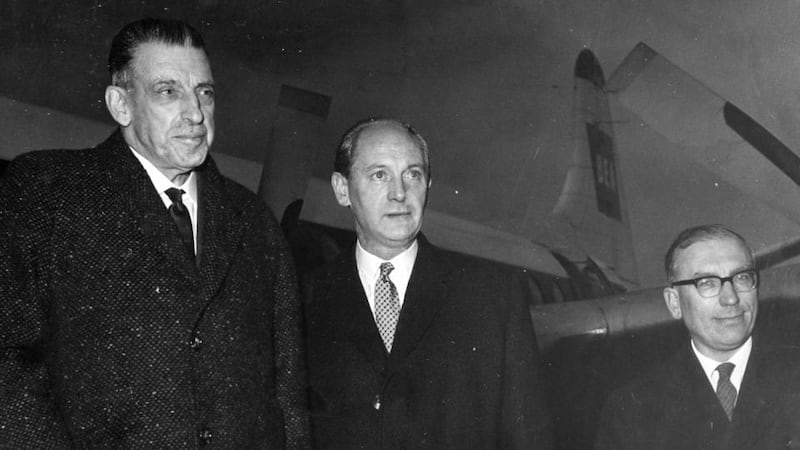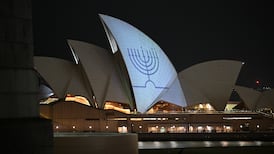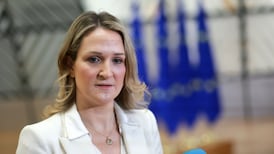In 1957 nowhere in Ireland’s public arena was the difference between the worn-out policy of protectionism and the energising policy of free trade better exemplified than in the age profile and economic insensibility of the Republic’s re-elected 75-year-old taoiseach, Éamon de Valera.
Although by then almost sightless and increasingly remote, "the Chief" retained his aura and still clung to the levers of power, ruling his cabinet through ties of loyalty and awe. He had become, as Ken Whitaker, then the new secretary of the Department of Finance, succinctly puts it, "a symbol of Éire passé".
More than a political leader, however, stood between the economic survival of the Republic and the doomsday scenario it faced. Between June 1951 and March 1957 there were three changes of government, with no fewer than four different ministers at the helm in Finance.

There was little opportunity to develop an alternative economic policy that didn”t involve merely clinging to protectionism. But, with its overall majority, the Fianna Fáil government that took office in March 1957 had the political freedom to tackle the economic impasse.
Already there were signs of more positive intent. De Valera listened to the advice of his trusted lieutenant and confidant Seán Lemass, the minister for industry and commerce, and realised that the time had come to set out on a different economic path. Adherents of old-school Gladstonian economic policy, such as Seán MacEntee, were adroitly sidelined in the new government. James Ryan, a close ally of Lemass, was appointed minister for finance.
In a departure from the protectionism of which he was principal architect, Lemass promised a State-financed capital programme, abolition of import tariffs, provision of capital investment and the modernisation of agricultural practices.
Up to then, according to Ken, “policy seemed to be on the side of hoping that things would get better but not taking the right actions to achieve it. But it was difficult to dismantle that protectionist self-sufficiency thinking at the time. It had become a sort of patriotic ideal, and any change contemplated could be viewed as undermining nationalism, as letting Britain in, so to speak.”
Ken’s elevation encouraged him in his belief that the time was right to embark on his own particular economic mission. The appalling economic prospect alone, however, would have served as sufficient motivation for change.
A failed country
In 1957 alone almost 60,000 people left the country, mainly for Britain, in search of employment and a better lifestyle. Despite this human drain, unemployment in Ireland remained among the highest in western Europe.
Agriculture, which “employed” 40 per cent of the population and was traditionally acknowledged by all shades of political opinion and none as the mainstay of the Irish economy, was in a “prehistoric” state. As Ken has observed, “the perception we all had in the mid 1950s was of a country whose economic and social development had dismally failed to live up to expectations engendered by the struggle for, and achievement of, political independence”.
Ken realised it was not merely government policy that had to change but also people’s attitudes and expectations. He wrote, “Unless the individual members of the community have sufficient patriotism and realism to accept the standard of living produced by their own exertions here – even if it should continue for some time to be lower than the standard available abroad – the basis for economic progress simply does not exist.”
The now-famous 1958 plan Economic Development, which was to become synonymous with Ken Whitaker's name, did not suddenly emerge as a blinding light illuminating the darkness. It emerged from a gestation period of observation and analysis and with the intention, as he puts it with characteristic understatement, "having myself experienced for some time past a sense of anxiety and urgency about Ireland's economic and political future . . . to make some positive contribution towards the betterment of the country".
From early 1957, in what Ken refers to as "this dark night of the soul", what would become Economic Development began to take shape. In February, before the general election, he went on an exploratory mission to Washington DC to assess Ireland's prospects of joining the IMF and World Bank.
The country needed not merely the technical advice and training that institutions like the World Bank and IMF offered but also sources of finance for the capital investment necessary for the plan he contemplated. If this was to be forthcoming a five- or 10-year national-development programme would have to be constructed; lurching from one budget to the next was no longer an option.
A memo to the minister
On March 21st, his first day as minister for finance, James Ryan was confronted with a document entitled
The Irish Economy
, written by the new secretary of his department, on the state of the economy and its implications for the survival of the Republic as a political entity.
Ken’s words were blunt. “In the political field the primary national objective is the reunification of the country. Until that is achieved, however, and no doubt after it has been achieved, the principal economic problem of the Irish Government will continue to be the safeguarding of political independence by ensuring economic viability. Without a sound and progressive economy, political independence would be a crumbling facade.”
He urged the government to stop sheltering “behind a protectionist blockade” that not only condemned the people to a lower standard of living than the rest of Europe but also, in turn, encouraged emigration and thereby threatened to make it “impossible to preserve the 26 counties as an economic entity”. He urged ministers to accept instead “the challenge of free trade”.
Resorting to rhetoric that he knew would ruffle republican feathers in the government, he continued, “If we do not expand our production on a competitive basis . . . it would be better to make an immediate move towards reincorporation in the United Kingdom rather than wait until our economic decadence became even more apparent.”
Whatever reprimand he might have expected for such outspoken criticism of government failure, which in times past could well have cost a keeper of the purse his head, did not materialise. The government’s immediate response was to accept his recommendation that it seek membership of the IMF and the World Bank, and the articles of agreement were formally signed that August. Most in Ireland, even in the government, as Ken ruefully recalls, had “hardly even heard of the IMF . . . not to be too mealy-mouthed about it.” For Ken, however, membership was vital, and it was only a first step.
Already quietly at work
To keep the mind of the body politic focused he used Ryan’s first budget speech, which he drafted, to urge the need “for a comprehensive review of our economic policy”. Little did the minister realise that, behind the scenes, with the help of some willing colleagues, Ken Whitaker had the “review” already in hand.
During 1957 Ken was already quietly at work putting various aspects of the plan into place. He established a departmental committee to pursue “energetically” a “thorough study” of productive projects that could be wholly or partly financed by the State. “I have in mind that the results of this study will be placed before the minister and, as far as may be thought proper, be communicated to the capital advisory committee.”
For Ken Whitaker “planning” represented “the approach of reason and order as opposed to drift and social unrest”. It was only from the mid 1950s, following the introduction of the Monnet plan in France and the Vanoni plan in Italy, that the idea of a comprehensive national plan was considered respectable by democratically elected governments, the concept previously being associated with the communist system and thereby suspect.
That, indeed, was something he was determined to avoid. Like every plan, Economic Development had, as he knew, its own time. "Everything has to grow. Even ideas come in waves. Idealism must be fitted into the framework of realism."
By July 1957 the most vital element of the plan, the one he consistently promoted – the replacement of nonproductive by productive capital expenditure – was, on his instructions, being implemented in the Department of Finance, as a test for future applications by other departments.
Emigration: an ‘
intricate problem
’
Another piece of the jigsaw was put in place when, with Ryan and JJ McElligott of the Central Bank of Ireland, Ken travelled to Washington to attend the annual meetings of the IMF and the World Bank, the first at which Ireland was officially represented.
At the meeting he presented a memorandum outlining Ireland’s economic development needs and its willingness to embrace foreign investment. The World Bank subsequently agreed to send an official delegation to Ireland.
The reports of the Commission on Emigration (1948–54) and the unremitting human drain from the land confirmed by the 1956 census highlighted the demoralising side effects of unemployment and emigration on the community, especially in rural Ireland.
“The common talk amongst parents in the towns, as in rural Ireland, is of their children having to emigrate as soon as their education is completed in order to be sure of a reasonable livelihood . . . setting up a vicious circle – of increasing emigration, resulting in a smaller domestic market depleted of initiative and skill and a reduced incentive . . . to undertake and organise the productive enterprises which alone can provide increased employment opportunities and higher living standards.”
The “intricate problem” of emigration and its devastating propensity to undermine the confidence and morale of those left behind continued to challenge and animate Ken Whitaker throughout his public career.
During 1957 work on what Ken called his “manual of recommended change” continued apace. “I found it desirable,” he says, “as soon as I was appointed secretary, to draw the various divisions of the department together to develop a broader consciousness and consistency of policy by holding a Monday-morning meeting with the assistant secretaries to go through a tabular survey of the major matters under consideration and the decisions in contemplation.”
Band of young acolytes
While the idea for
Economic Development
originated with Ken Whitaker, many others, as he is ever at pains to acknowledge, collaborated in its compilation. Charlie Murray, then strategically placed as assistant secretary in the office of the taoiseach, became his principal collaborator. From within his own department he gathered a band of young acolytes – Maurice Doyle, Seán Ó Ciosáin, Maurice Horgan, Dónal Ó Loinsigh, Jim Dolan, Tomás Ó Cofaigh and Dr Brendan Menton – with others more junior, such as Seán Cromien, working in the background.
The enthusiasm of the project’s instigator spread to his colleagues. “We were chuffed to be asked,” says Ó Cofaigh, whose brief was to examine every aspect of the tourism industry.
A sense of innovation, enthusiasm and purpose penetrated the stale air of the Upper Merrion Street corridors as through the autumn and into the winter of 1957 the minutiae of State, semi-State and private enterprise were analysed, and the strands that would eventually constitute Economic Development were drawn together.
“We worked late into the night,” Ken says, “and were early to work with real enthusiasm the next morning. We were refreshed by our release from a purely negative role and the feeling that we were doing something constructive and worthwhile.”
He assigned sections of the plan to individual members of the team, who gathered and assessed relevant statistics and information on their designated fields, meeting weekly to discuss progress and problems arising.
In early December Ken told his minister what he and his colleagues had, by then, all but completed and of “the desirability of attempting to work out an integrated programme of national development”, which he believed was critical “for the country’s survival as an economic entity”. “To do him justice,” Ken says, “Dr Ryan took it in his stride and saw the virtue of a stimulus of this kind.”
Knowing from experience that old habits and territorial jealousies were entrenched in some departmental thinking, Ken was insistent that the study should continue under his direction. As a finance man through and through he had, perhaps, another, more pragmatic motivation: to reinforce the department’s predominant position and rid it of its image of “inverted Micawberism” – of being always “waiting for something to turn down”.
Leaving it to Lemass
Ken’s proposal had yet to run the gauntlet of other ministers, including the “chief architect of protectionism”, the tánaiste, Lemass, and the taoiseach, de Valera. Ken found he was pushing at an open door where Lemass was concerned. “You could not ask for a better minister if you wanted to put new ideas forward.”
De Valera “withdrew from the whole thing and left it to Lemass”, but not before later claiming, as Ken good-humouredly says, “that free trade had been his policy from the beginning . . . He sort of claimed it retrospectively.”
By May 1958 the first draft of the 249- page Economic Development was completed. Detailed, meticulous and comprehensive, the document surveyed and analysed the principal constituent parts of the Irish economy, from agriculture to tourism, examining their deficiencies as well as their potential.
It assembled and laid bare before the political and public gaze the inadequacies endemic in the economic structure of the country: the backward and unproductive state of agriculture; the meagreness of industry; the decline in population and the scourge of emigration; the scarcity and timidity of private capital and the tendency for public capital to be expended on projects that, however socially desirable, were economically unproductive. But above all else Economic Development offered a way out of the economic quagmire in which Ireland and its people were fast bound.
Whose plan is it anyway?
The final draft of
Economic Development
was quickly prepared and circulated. It became known as
The Grey Book
because of the colour of the cover, although to Ken’s eyes “it looked to be green”.
The White Paper officially endorsing Economic Development was entitled the Programme for Economic Expansion; just 50 pages long, it was presented to the Houses of the Oireachtas on November 11th, 1958, and was published the following day.
The main dilemma regarding the publication of Economic Development, however, related to the question of its authorship. Publication of a work attributed to one or more identifiable public servants was unprecedented.
Ken’s former ministerial boss Seán MacEntee was adamant that any transgression of this principle would undermine ministerial prerogative and responsibility. James Ryan, on the other hand, was equally insistent that the study be published under his secretary’s name. The issue was finally put beyond doubt when Lemass rowed in behind Ryan.
“Publication as an anonymous government publication would give it political aspects which we did not want . . . The association with the name of a nonpolitical civil servant would help to get its acceptance over political boundaries,” Lemass later confirmed.
Lemass, Ken recalls, “recognised that there was an inherent honesty about what was being advised . . . that we were not seeking controversy but that we could be trusted. But, of course, it also gave the politicians an out. If it drew down terrible condemnation they could say it was not the work of the government but a group of characters in the Civil Service who were never asked to do it in the first place.”
This is an edited extract from TK Whitaker: Portrait of a Patriot, by Anne Chambers, which is published by Transworld on Tuesday











